SRITNE INSIGHTS ON THE JOB MARKET (1)
LinkedIn released an article in April 2019, citing the top 25 firms with a firm size of at least 500 employees where the Indian skilled professionals aspired to work. Linkedin used the below-mentioned parameters to construct the list:
- Count of Job Posting views (Interest)
- Count of professionals viewing career’s page of the company (Engagement)
- Count of job-seekers connecting with the company (Job Demand)
- Company’s Retention Rate of Employees (Retention Rate)
The list of companies in the order as ranked by LinkedIn is as follows:
Flipkart (Walmart), Amazon, Oyo rooms, One97 Communications (Paytm), Uber, Swiggy, TCS, Zomato, Google, Reliance Industries, EY, Adobe, BCG, Yes Bank, IBM, Daimler Mercedes), Freshworks, Accenture, OLA Cabs, ICICI Bank, PWC, KPMG, L&T (and it’s subsidiary L&T InfoTech), Oracle, Qualcomm, and Deloitte.
Due to the lack of data points on Freshworks, we exclude it from our study and replace it with Deloitte to account for all the Big four accounting firms in our analysis. (Note: Deloitte was one of the “top 25 firms where India wants to work” list produced by Linkedin in 2018).
Things changed as of Mid-March 2020. The world started to witness the spread of the deadly coronavirus, an unanticipated event, the pandemic situation was in place. The country (India) witnessed a 2-month lockdown in the second quarter of 2020. The people of the country and the economy was disturbed. Many firms were not resilient to this shockwave. They suffered huge losses, lost their business, laid off their workforce. It was an unpleasant chain of events that had an economic and mental impact on the workforce. On the other hand, some firms were resilient to this shockwave by having the following characteristics:
- heavily tech-oriented nature of work & projects that can be handled remotely,
- a resilient business model and new initiatives that innovated solutions to help the populace during the pandemic and churned profits,
- finances to sustain losses and support their workforce.
We studied how this list of top 25 firms where the Indian workforce sought employment anticipating a successful career responded to the COVID-19 Crisis. We cite the Naukri Stepup Employee Survey data and the AmbitionBox Employee Reviews data (from Info Edge) to support our study.
THE SURVEY DATA:
We utilize the Survey conducted by Naukri during the pandemic as a part of their Stepup Insights Initiative. To uncover the insights from this survey data, we must first understand how the Survey was conducted and how Naukri aggregated employee responses.
Visit the link (https://www.naukri.com/mnjuser/survey-covid) to understand the Survey outline and experience the framework used to collect the data. The framework asks the survey responders to talk about their firms’ response to COVID. Except for the Textual Review, all other responses collected are Boolean in Nature. After collecting the Boolean responses, for a company, they take the collective sum of the Boolean Responses and measure what fraction of total responses voted true for an option.
Figure-1 shows the number of responses collected by the firm name from our chosen top-25 list. The data is unbalanced as the survey sample was not restricted. Large Firms with a more prolonged presence in India had more reviews than smaller firms and firms with a comparatively shorter presence. The data is cross-sectional, and the data points were collected during and post-lockdown in India.
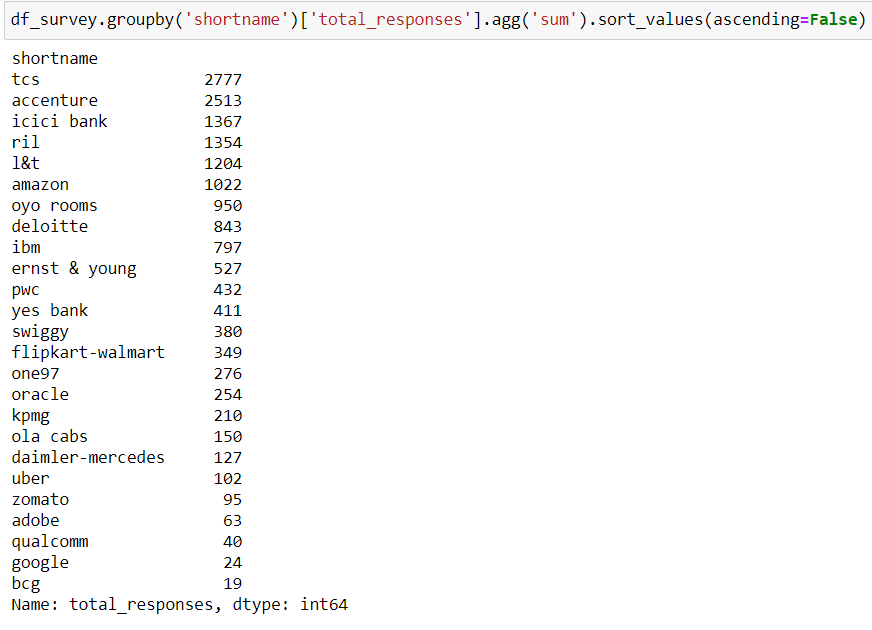
Note: The Survey Data is a sample set of opinions voiced by the employees on the benefits offered, hiring activities, and salary issues concerning their firm. The data points collected are largely anonymous, and the analysis results must be acknowledged objectively.
INSIGHTS FROM THE NAUKRI SURVEY DATA
We have three insights to offer from this Survey on the chosen top 25 firms:
- Benefits provided to employees during the pandemic.
- Hiring Activities during the pandemic
- Salary related Insights during the pandemic
ANALYZING THE BENEFITS OFFERED FROM THE SURVEY DATA
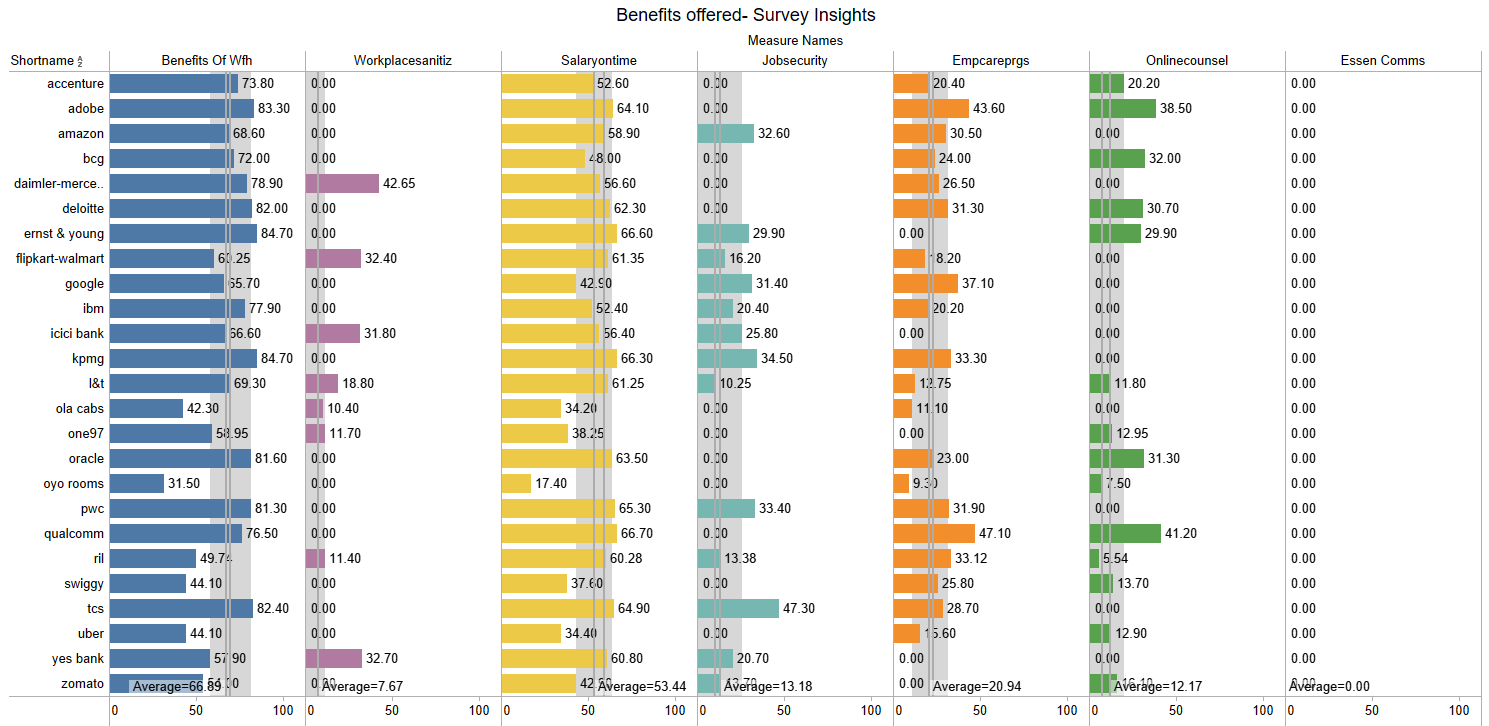
The Survey collected responses on seven different types of benefits offered by employers to their employees during the pandemic. Out of these seven benefits, we can see that none of the employers have been reported to provide the benefit of essential commodities. This is acceptable because only the firms that employed minimum wage workers offered this particular benefit, and the minimum wage employees primarily do not actively participate in voluntary online surveys.
- The benefit of Work From Home:
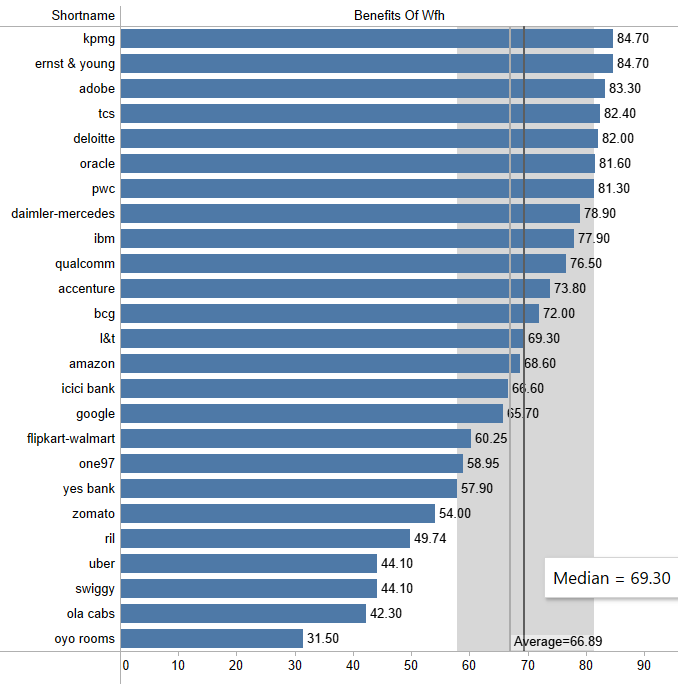
The Survey Data shows that, on average, 6 to 7 employees out of 10 at these 25 firms benefited from remote work allowance. Employees at Consulting and Technology firms (KPMG, EY, Delloite, PWC, TCS, Adobe, Oracle) had the highest remote work allowance. Employees at the Booming Startup Firms (OYO, Ola, Swiggy, Uber, Zomato) and Reliance (the largest Indian Conglomerate by Market Share) reported below-average remote work allowance.
2. The benefit of Work Place Sanitization:
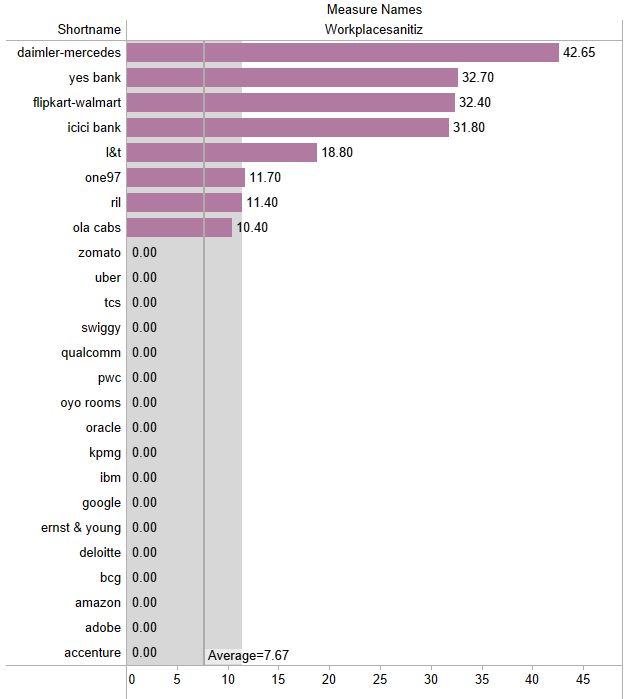
During the lockdown, only the essential workers were allowed to travel to their workplace by taking all necessary precautions; they benefited from Work Place Sanitization. Post-Lockdown, some employers urged the employees to go onsite for jobs that could not be taken care of remotely. Mercedes, ICICI Bank, and Yes Bank are the top 3 firms, with at least three on ten employees having workplace sanitization benefits. The lesser approval rating for this benefit implies that majorly Work From Home was in place.
3. The benefit of Job Security:
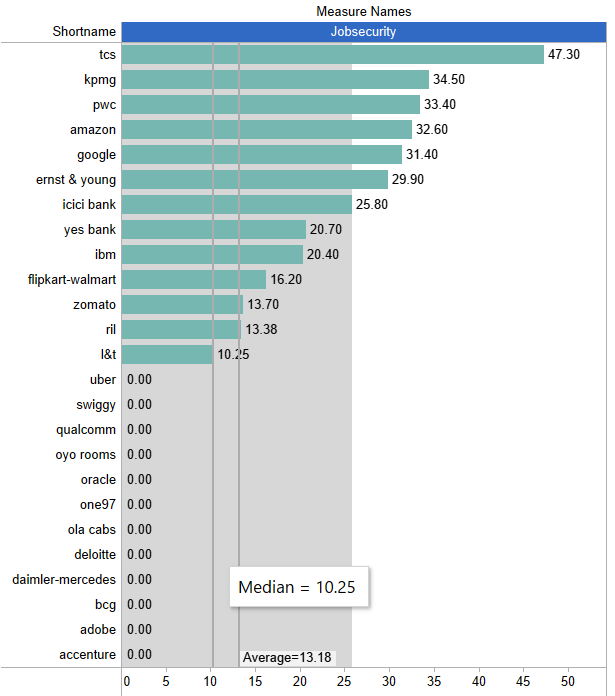
On average, only 1 in 10 employees reported the benefit of Job Security. TCS had the highest approval rating, with 47% of its Employees denoting assurance of no layoffs. KPMG, PWC, Amazon, Google, and EY are the other firms with at least 3 in 10 employees reporting Job Security benefits. Startups (Uber, Swiggy, OYO, Ola, Paytm), consulting firms (Accenture, BCG, Delloite), Manufacturing firms (Qualcomm, Mercedes), and software firms (Oracle, Adobe) offered no Job Security to their employees.
4. The benefit of Salary on time:
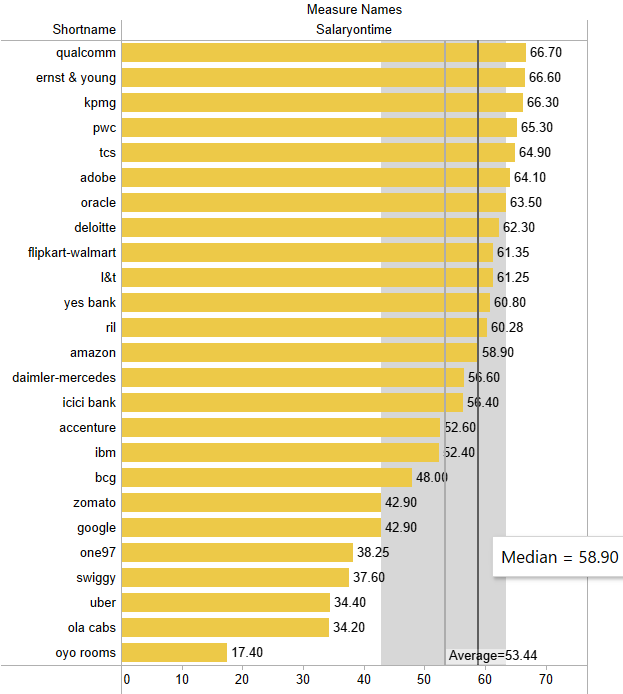
On average, 5 out of 10 employees at these firms benefited from salary credited on time with no delays. OYO ranks last in this list, indicating that many of this firm’s employees faced hiccups receiving salaries on time.
5. The benefit of Employee Care Programs and Online Counseling:
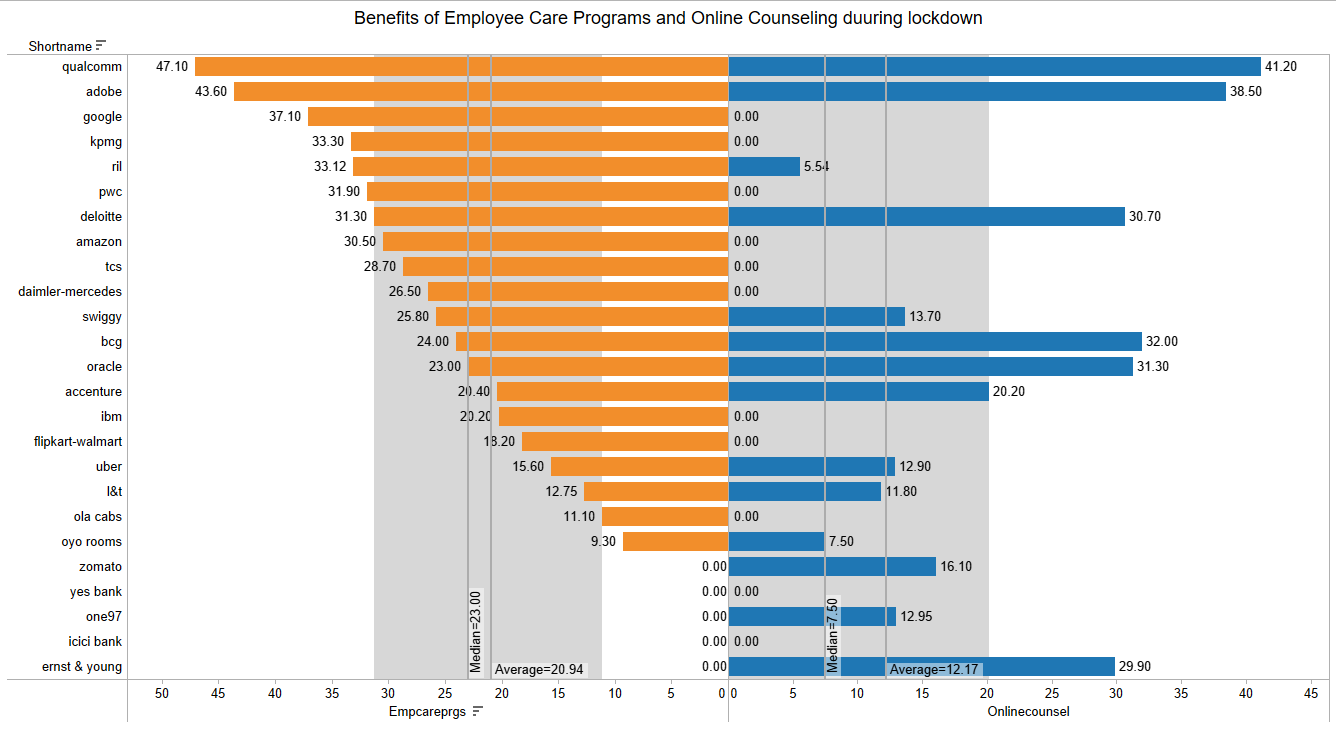
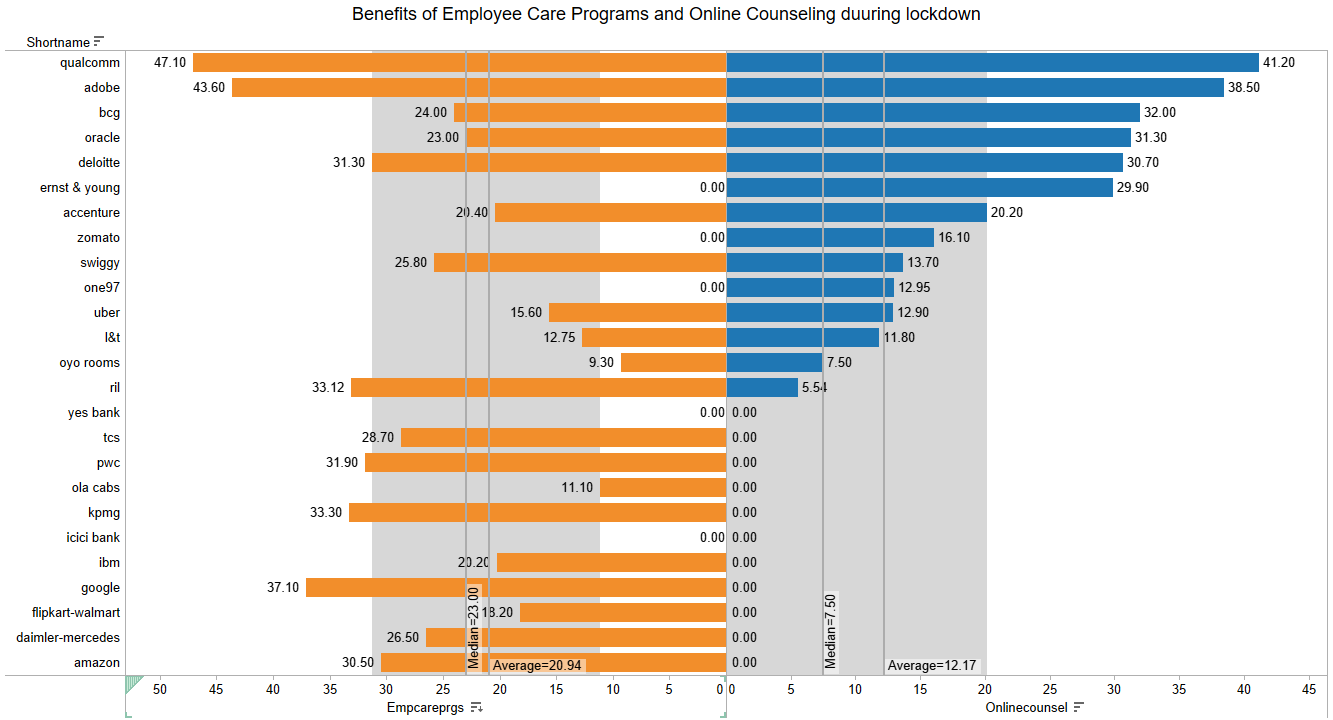
On average, 2 in 10 employees reported the benefit of employee care programs, and 1 in 10 employees reported the benefit of Online Counseling. Qualcomm and Adobe took care of their employees by offering this benefit during the pandemic. Largely Tech Skilled labor and Employees at MNCs of international origin had the benefit of online counseling.
ANALYZING HIRING TRENDS RESPONSES FROM THE SURVEY DATA
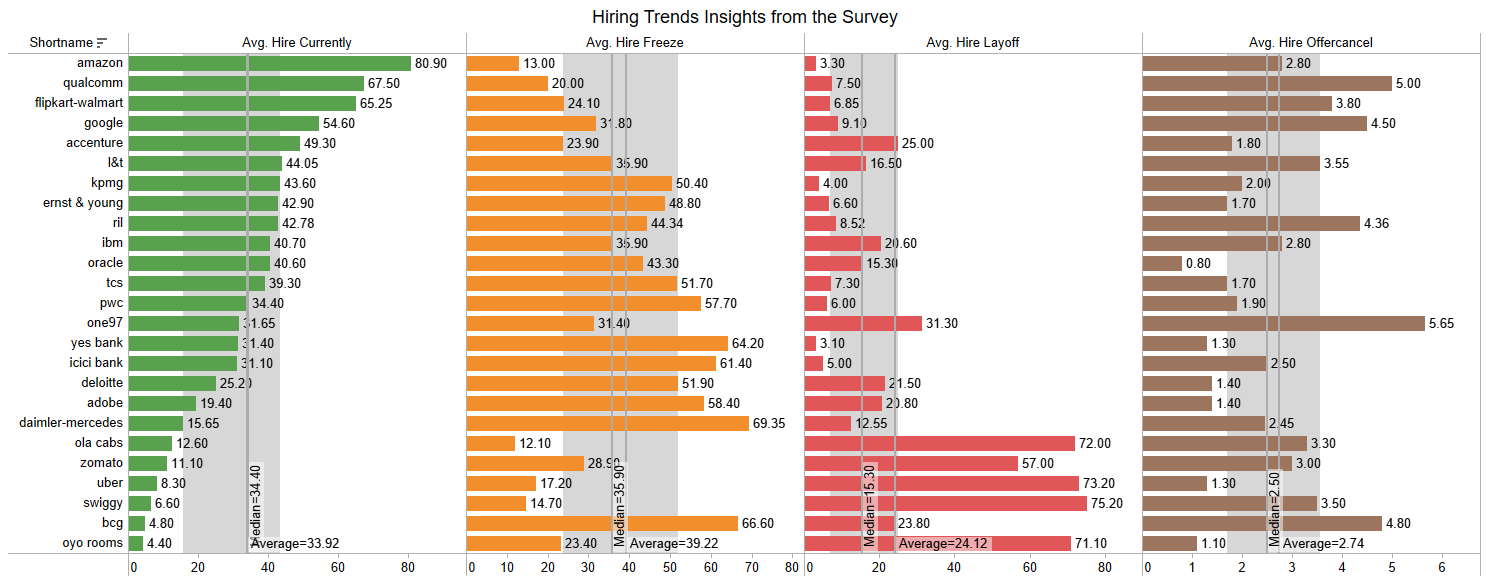
Figure-3: Hiring Trends Visualization
On Average, 3 in 10 employees reported Hiring Actively, 4 in 10 reported Hiring Freeze, 2 in 10 reported Layoffs in their departments at their firms. At Amazon India, 8 in 10 employees reported hiring activities at their firm in their departments. This was evident in many articles by reputed news outlets talking about amazon going on a hiring spree during the pandemic. Additionally, the combined value of Hiring Freeze and layoffs was lowest at Amazon. Flipkart Qualcomm and Google were the other firms with at least 5 in 10 employees reporting hiring activities. Employees at Swiggy, Uber, Ola, OYO, and Zomato (the most flourishing and well-known startups in India) reported the highest layoffs and lowest Hiring activity.
According to the Survey, there were very few employment offers canceled at these firms during the pandemic. On average, only 2 in 100 employees reported that their company canceled offer letters sent out to new hires.
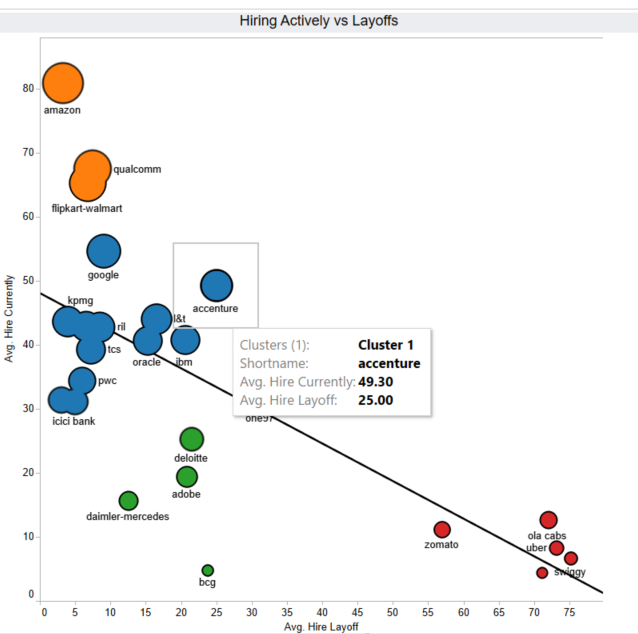
Figure-4 indicates that startups suffered the most in maintaining their workforce during the pandemic. Another interesting hiring pattern we get to see here is at Accenture, India. It fired thousands of employees during the pandemic and posted vacancies for 2x times the no. of employees it fired (Reference: While Accenture fires thousands, it is also hiring thousands (consultancy.in)). When we take a closer look at what happened, we see that they fired labor in low-performing ranks and hired highly skilled, educated, and qualified labor in high-demand areas showing that the company witnessed a shift in the demand for new skills that supported ‘capacity building with speed’ during the pandemic.
ANALYZING SALARY RESPONSES FROM THE SURVEY DATA
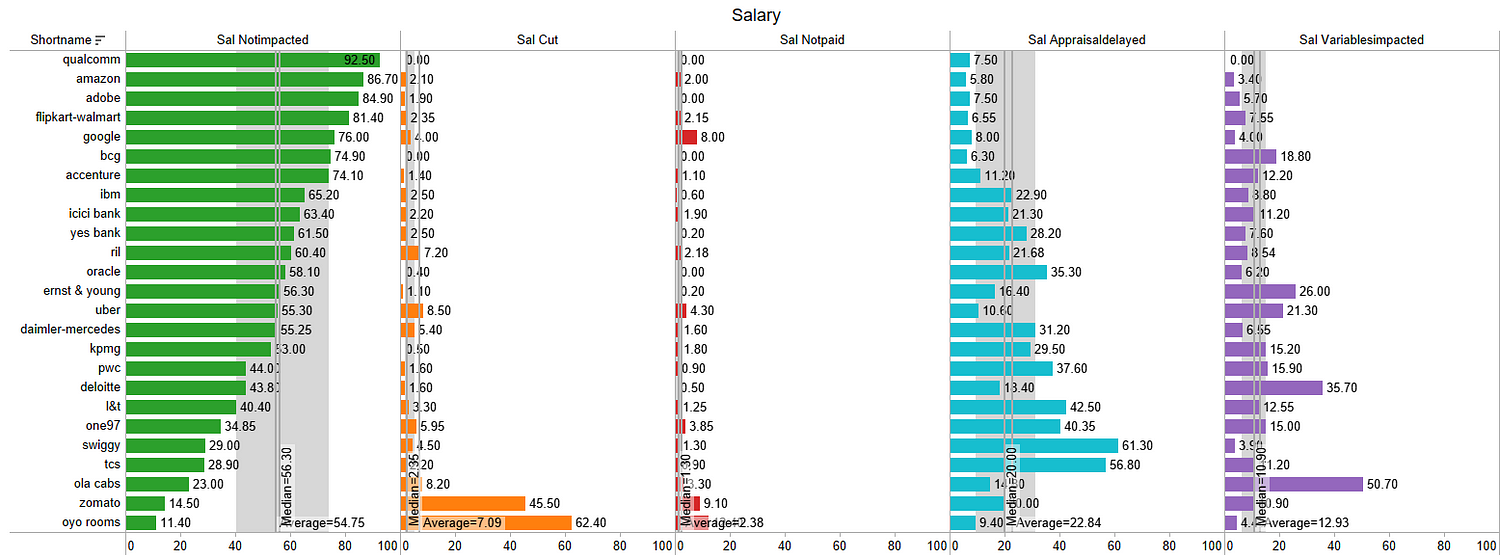
Figure-5: Salary Trends Visualization
On average, 5 in 10 employees who didn’t lose their Job reported that the lockdown had no impact on their Salary, 2 in 10 reported that their appraisal cycle was delayed, 1 in 10 reported that the salary variables had an impact.
According to the Survey, Employees of OYO, Zomato, Uber, and Ola, suffered the impact of salary cuts and the salary not being credited the most. 62% of OYO Employees and 45.5 % of Zomato Employees who took the survey reported salary cuts.
ADDITIONAL INSIGHTS FROM AMBITION BOX REVIEWS DATA
We utilized 12099 reviews posted during the year 2020 for the chosen top 25 firms, to understand the variation in employee sentiment and ratings. Figure6 shows the count of review responses collected by company name.
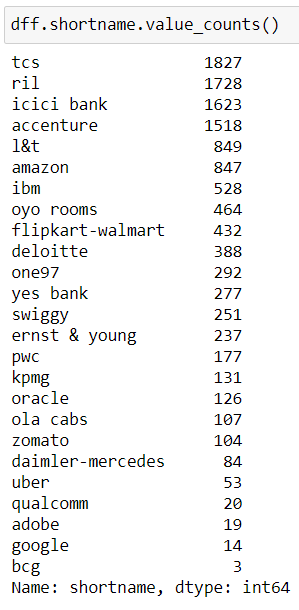
Figure-6: Review Counts by Company Name
DECLINE IN EMPLOYEE RATINGS DURING LOCKDOWN
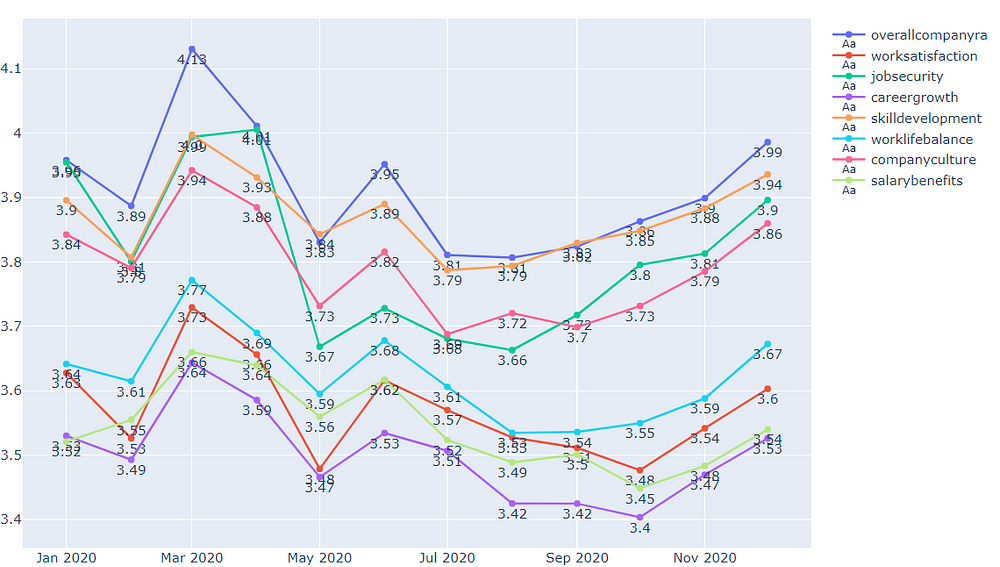
DECLINE IN POSITIVE SENTIMENT EXPRESSED IN THE TEXTUAL REVIEWS DURING THE LOCKDOWN
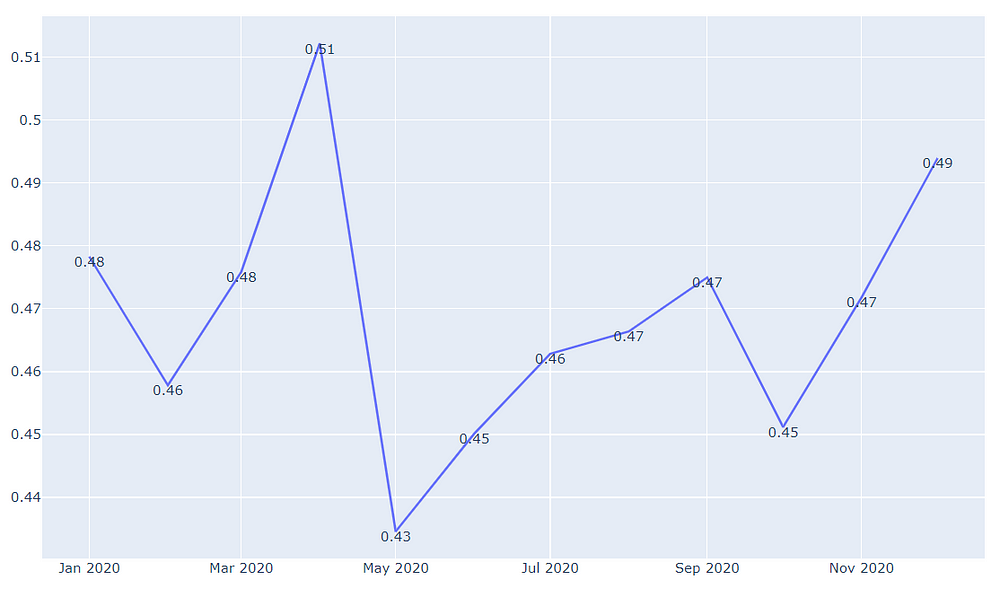
WORD CLOUD OF REVIEWS
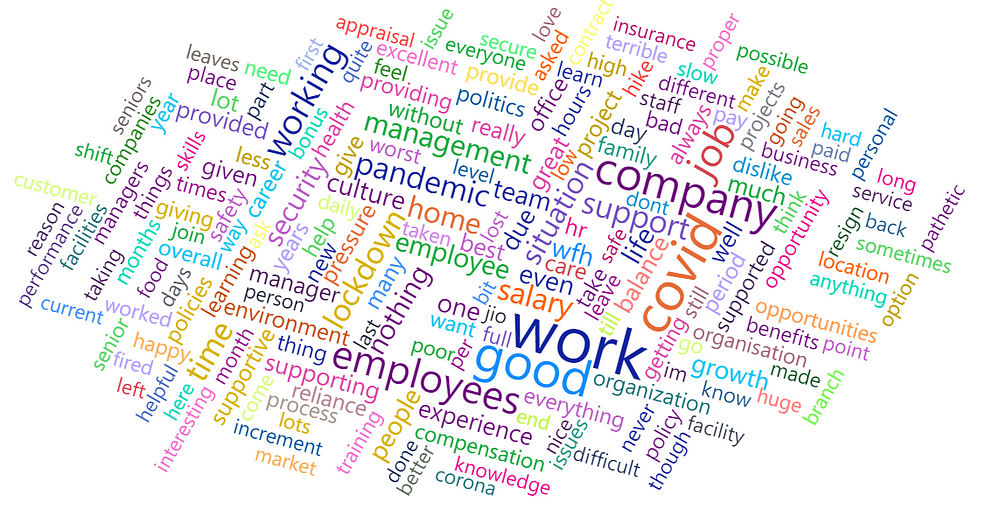
The collective Average of ratings and sentiments expressed by the employees across all the chosen 25 companies shows that the ratings and positive sentiment dropped sharply during the lockdown, and it continued to decrease until the end of the lockdown. Furthermore, there was a sharp spike during the month of June-the Unlock Phase. The declining trend recovers gradually to Jan-2020 levels by the end of the year 2020.
CONCLUSION:
Quick adoption of Work from home is evident across all the top 25 employee favorite firms. Employees at Startups reported less hiring and more layoffs as compared to employees at large and well-established firms. On Average, Just 1 in 10 employees at these firms who took the survey reported the benefit of job security indicating that this advantage is influenced by the demand for the products and services of the firms, policies of the government, ability of the management to introduce innovation and adoption to the new normal, and the strength of the employees to deliver output with speed.
Stay tuned for our next blog on “The sustainability analysis of Occupations Suitable for Machine Learning and Remote Work during the COVID-19 Pandemic”
Visit the link below to access the Tableau dashboard.
Author: Sachin Kumar S
Research Associate at SRITNE ISB


